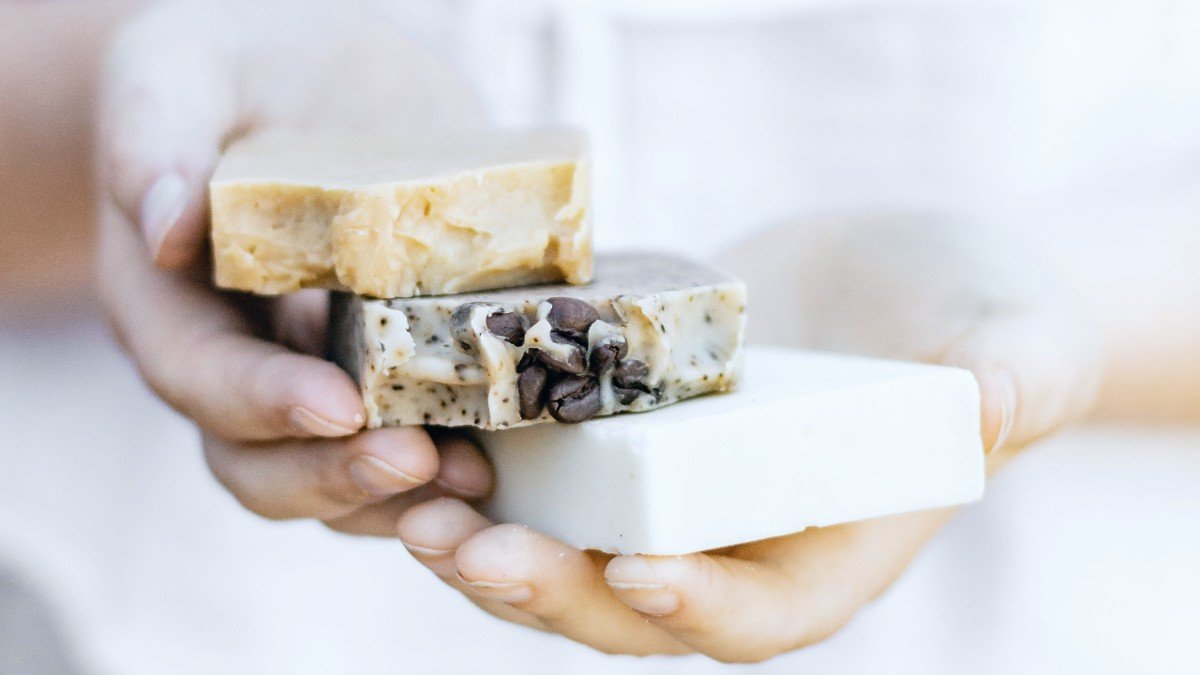Is Bar Soap More Eco-Friendly Than Liquid Soap?

Soap, the fundamental part of our cleaning and hygiene, has a central place in our contemporary society.
Due to the fast-paced nature of our daily lives, the demand for quick and practical solutions has popularized liquid soap over bar soap. However, with the increasing consciousness about the future of our planet, questions regarding sustainability are also a big part of the decision-making process with everything we purchase and use, including the soaps we apply to our hands every day.
Used by all of us on a regular basis, soap basically comes in two forms: bar and liquid.
Both forms have their own advantages and disadvantages in their consumption, and there is considerable contrast regarding the impact they have on the environment.
Now, we will delve into the details of these differences and try to understand whether using bar soap or liquid soap is a more environmentally friendly alternative.
What’s in bar and liquid soaps, and which is greener?
Both bar and liquid soaps share foundational ingredients: fats or oils, water, and alkali, with lye being the most common. However, their paths diverge significantly when examining additional ingredients.
Liquid soaps often incorporate stabilizers, emulsifiers, thickeners, and preservatives. These additives ensure the soap’s desired consistency, appearance, and shelf-life.
Unfortunately, many of these additives are synthetic, and some even have roots in non-renewable petroleum sources. Moreover, the high water content in liquid soaps means they are less concentrated, which may result in more product being used per wash.
In contrast, bar soaps lean towards minimalism. Beyond their foundational components, many bar soaps don’t entertain an extensive list of additives. In fact, some premium bar soaps champion organic ingredients, from natural oils to botanicals, further minimizing environmental impact.
This pared-down approach not only renders them more biodegradable but also ensures they carry a reduced chemical footprint.
Weighing the environmental implications of the ingredients, bar soaps emerge as the greener alternative, embracing simplicity and reduced synthetic reliance compared to their liquid counterparts.
Which soap is made and packaged in a more eco-friendly way?
From a production standpoint, liquid soaps present a more complex manufacturing process.
Due to their liquid nature, they undergo additional procedures, including emulsification, to achieve the desired texture.
Furthermore, because of their elevated water content, there’s a necessity to add preservatives to ward off microbial growth, ensuring the soap’s longevity. This complexity means they often consume more energy during their production, which can lead to a higher carbon footprint.
Packaging is another critical dimension in this analysis.
Liquid soaps predominantly use plastic bottles, contributing to the growing challenge of plastic pollution. Even when these bottles are labeled as recyclable, a significant proportion doesn’t undergo the recycling process, ending up in landfills or, worse, our oceans.
Contrastingly, bar soaps are traditionally encased in simpler packaging materials. Paper and cardboard are common, and these materials not only decompose faster but are also more likely to be recycled, thus producing less waste in the long run.
Which soap uses less water and is kinder to oceans?
Bar soaps emerge as the clear leaders when considering water consumption in production. Their formulation inherently contains less water, making them more concentrated and efficient.
In contrast, liquid soaps are laden with a higher water content, which means not only is more water utilized in their creation, but consumers might also use more of the product during each application, leading to indirect increased water usage.
Moreover, the environmental ramifications extend beyond just water usage.
Many liquid soaps are formulated with microplastics and non-biodegradable chemicals that can elude wastewater treatment and contaminate marine ecosystems. These pollutants threaten aquatic life and can even permeate our food chain. Bar soaps, with their simpler compositions, often introduce fewer pollutants to our waters, showcasing their reduced impact on our oceans and their inhabitants.
Is it better to use liquid soap than bar soap in hand washing?
When assessing the efficacy of liquid versus bar soap in terms of cleanliness, both forms stand on relatively equal ground.
Numerous studies indicate that while liquid soaps may have a lower tendency to harbor bacteria, the potential contamination on bar soaps is typically negligible, especially in domestic environments.
Proper storage plays a role here; ensuring bar soaps are placed on well-draining dishes and kept dry between uses can mitigate most hygiene concerns.
Beyond the realm of cleanliness, environmental considerations weigh heavily in this debate.
Reflecting on the aspects we’ve previously delved into – from production to packaging, water usage, and potential pollutants – bar soaps emerge as the environmentally superior choice.
How can we use liquid and bar soaps more sustainably?
Regardless of your soap preference, there are steps to make your usage more sustainable:
- Buy in Bulk: If you prefer liquid soap, purchase it in larger containers or refill stations to reduce plastic waste.
- Look for Eco-friendly Brands: Some companies produce liquid soap with biodegradable ingredients and eco-friendly packaging.
- Store Bar Soap Properly: This extends its life and ensures minimal waste. A well-draining soap dish is ideal.
- Recycle Packaging: If your liquid soap comes in a plastic bottle, ensure you recycle it. For bar soap packaging, choose those wrapped in recyclable or compostable materials.
- Educate & Advocate: Sharing knowledge about the benefits of bar soap can help others make more informed, sustainable choices.
In assessing bar and liquid soaps, both offer unique advantages, with liquid soaps often prized for convenience and perceived hygiene, especially in communal spaces.
However, when environmental sustainability is the benchmark, bar soaps consistently edge ahead due to their resource-efficient production, eco-friendly packaging, and minimal impact on water systems.
Yet, the emphasis shouldn’t be on negating one in favor of the other. Instead, informed choices can bridge the gap.
Opting for eco-friendly packaged liquid soaps, avoiding harmful additives, and practicing mindful consumption can all diminish the environmental toll.
